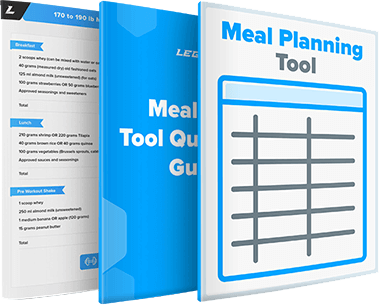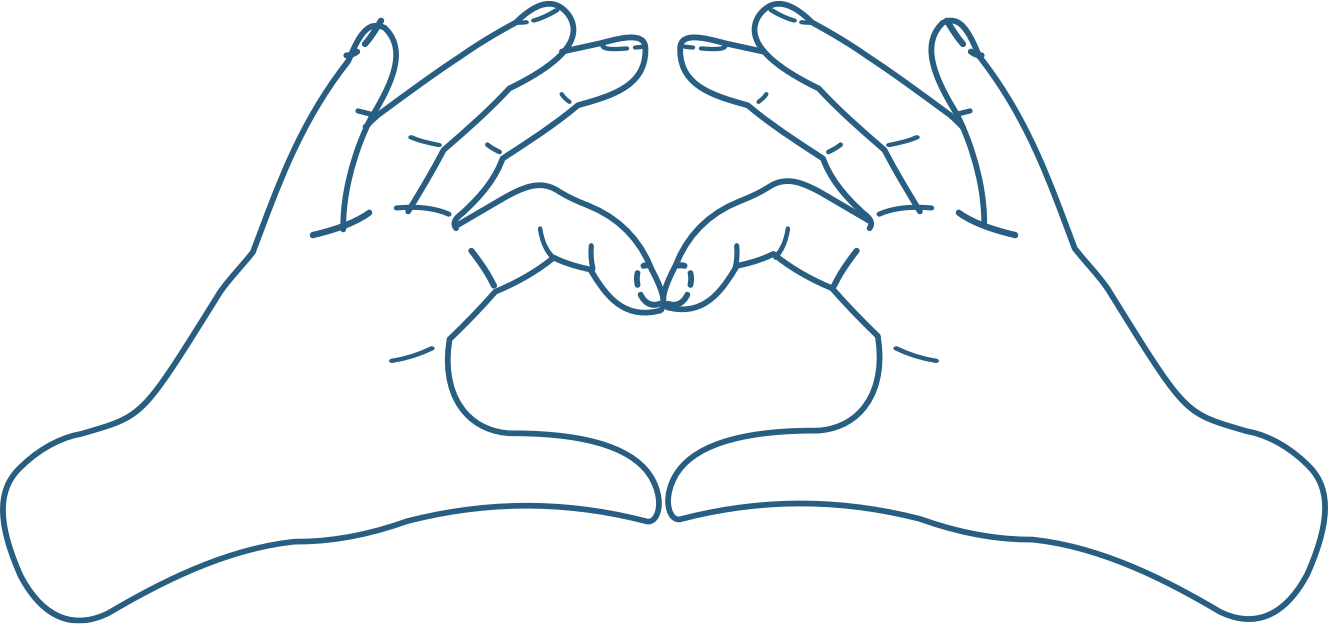Conventional weightlifting wisdom says the front rack is the gold standard front squat grip.
But let’s face it: not everyone can do it.
Wrist pain, shoulder tightness, and the almost-choking sensation it can cause often push gymgoers to look for other options.
While most alternative hand positions lack the front rack’s stability, a few work well—if you know how and when to use them.
In this article, you’ll learn three front squat hand positions that work for any weightlifter. You’ll also learn how to do them and get tips to make each grip as comfortable and stable as possible.
Key Takeaways
- The front rack is the best front squat hand position for stability. The downside is it requires good mobility.
- If the front rack isn’t an option, front squatting with lifting straps or using the crossed-arm grip are effective alternatives.
- The crossed-arm grip reduces strain on your wrists but may feel less stable as the weights get heavier.
- Lifting straps help you mimic the front rack grip, so performing the front squat with straps is a decent solution for people who struggle to maintain the front rack unaided.
- Because lifting straps allow you to inch closer to a rack position over time, they’re a useful tool for improving mobility.
What Are Front Squats?
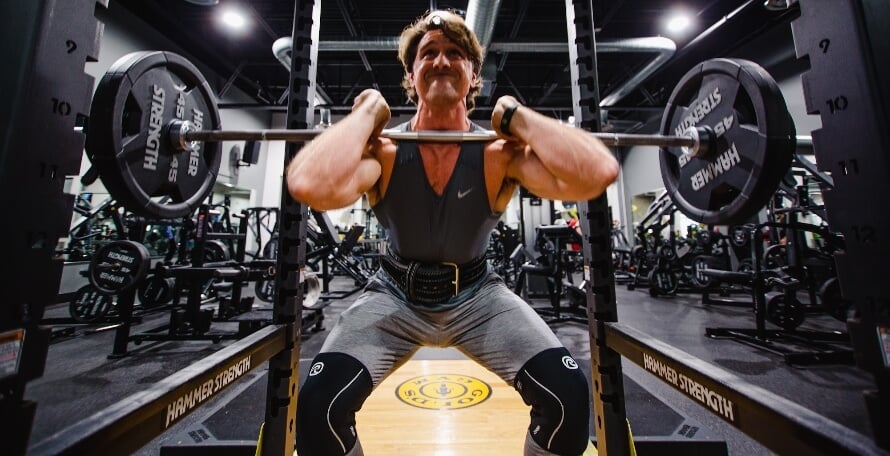
Front squats are a lower body squatting exercise where you position a barbell across the front of your shoulders and hold it in place with your hands.
The most common hand position for front squats is the “front rack.” Here’s how it looks:
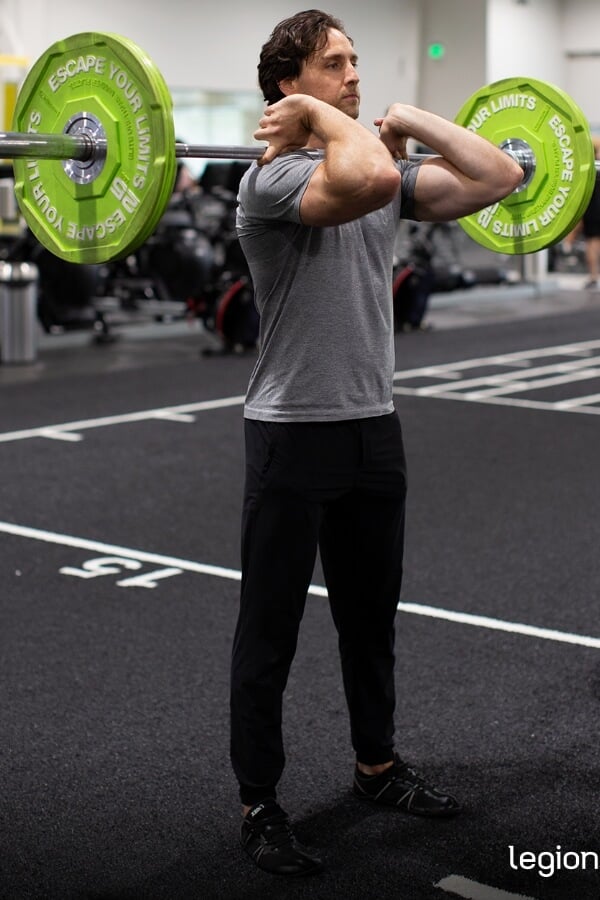
While the front rack is stable and effective, many people struggle to maintain it due to the wrist and shoulder mobility it requires.
For this reason, gymgoers have long experimented with alternative ways to position their hands while front squatting. Most of these alternatives aren’t stable enough to allow you to lift heavy weights safely, but a couple work well . . .
3 Front Squat Hand Positions for Maximum Comfort & Stability
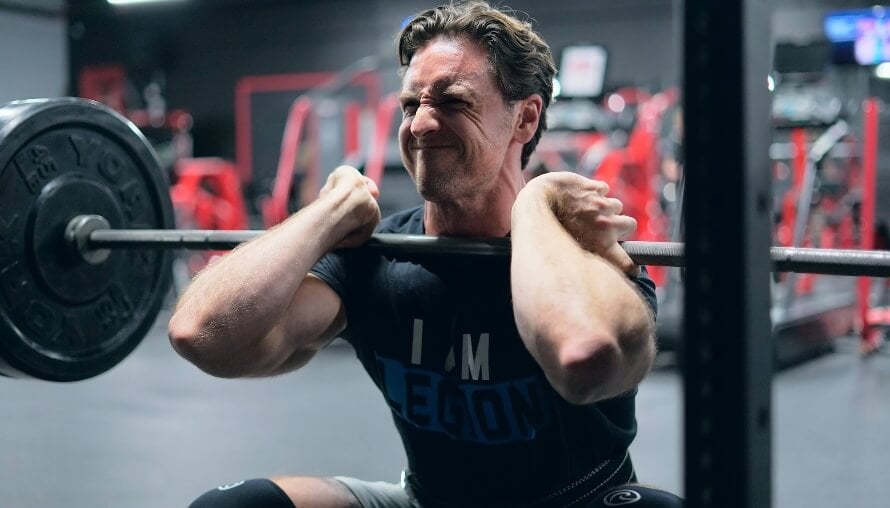
Of all the front barbell squat hand positions people have tinkered with over the years, the most effective are the front rack position, the crossed-arm front squat grip, and the lifting straps front squat grip.
Let’s look at why these hand positions are practical, how to set up and use them correctly, and tips on how to make them as stable and comfortable as possible.
1. Front Rack Position
As we’ve already seen, the front squat rack position is the most common, stable, and safe hand placement for front squats, which is why I typically recommend it. However, it’s also the most challenging to maintain, especially if you lack wrist or shoulder mobility.
To make it easier, there are a couple of variations to consider:
- Full Grip: This involves wrapping all four fingers of each hand around the bar. It’s the most stable and secure grip, but it requires a high degree of wrist and shoulder mobility.
- Partial Grip: For those who lack the mobility to maintain a full grip, the partial grip is a great alternative. Here, you use one, two, or three fingers to hold the bar, instead of your entire hand. While it’s not quite as secure as the full grip, it’s usually more comfortable and still provides solid stability during the squat.
Here’s how a full grip looks:
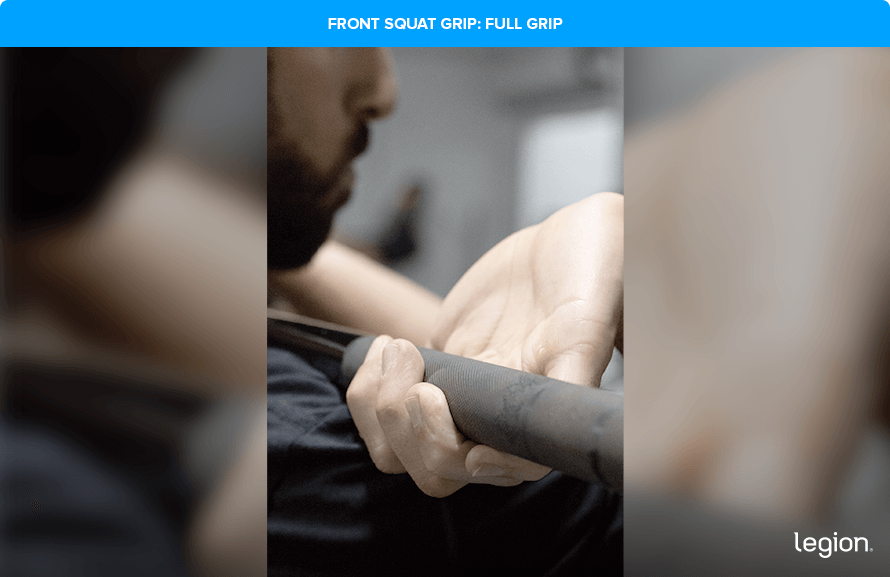
And here are two partial grips using 1 and 2 fingers:
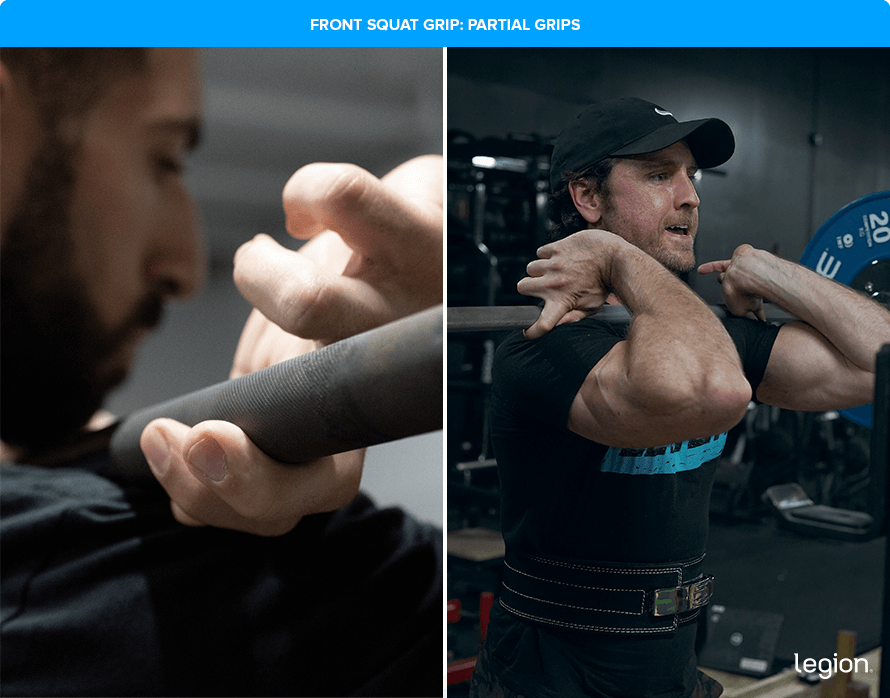
How to Hold the Bar for Front Squats Using the Front Rack:
- Set the barbell in the squat rack at about collarbone height.
- Take hold of the bar with a shoulder-width grip, palms facing away from you.
- Step closer to the bar so it presses against the front of your shoulders. Push your elbows up and out in front of the bar.
- If your mobility allows, keep all your fingers under the bar. If you feel discomfort in your wrists, elbows, or shoulders, remove 1-to-3 fingers, starting with your pinky and working toward your pointer finger.
Expert Tips:
- The bar should rest right at the base of your throat—almost like it’s choking you (but not quite).
- Don’t hold the weight in your hands. Your fingers should help keep the bar from sliding forward, but the weight should rest on your shoulders.
- Focus on driving your elbows up to maintain the correct position, aiming for your upper arms to be as parallel to the floor as possible.
- Stretch your lats before performing the front squat. This can make the front rack position more comfortable.
- To prepare yourself for the position, hold an empty barbell in the front rack while driving your elbows toward the ceiling. Hold for 5-to-10 seconds, release, and repeat 3-to-5 times.
2. Crossed-Arm Front Squat Grip
The crossed-arm grip is a solid alternative to the front rack position, especially for those who lack wrist or shoulder mobility.
In this grip, you rest the bar across the front of your shoulders, raise your elbows up and out in front of the bar, and cross your arms over each other, resting your hands on top of the bar just outside the width of your neck.
Here’s how it looks:
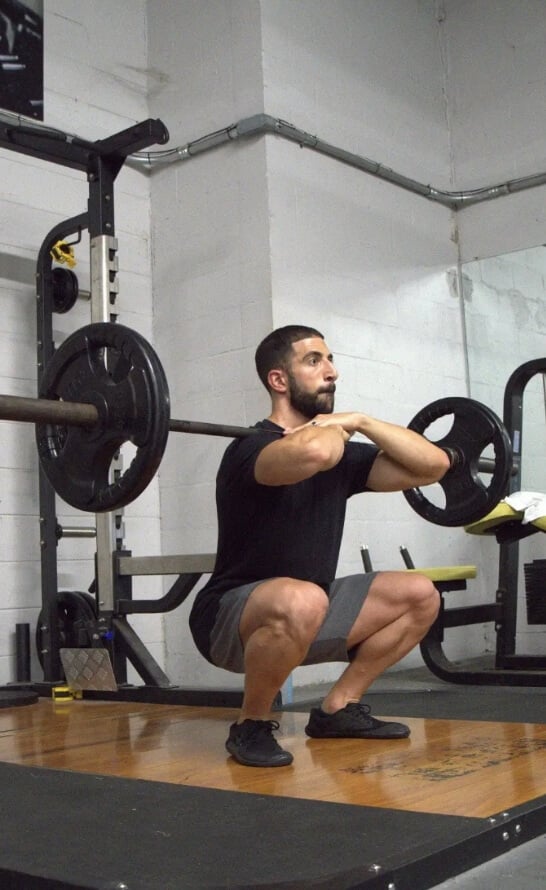
While the crossed-arm grip is easier on your wrists and shoulders, it’s not as secure as the front rack. Without the “wedge” from your hands under the bar, it’s easier for the bar to slip forward, and your elbows are more likely to drop.
If your elbows drop, your torso will likely tip forward, throwing off your balance and making the exercise harder and potentially more dangerous. As long as you keep your elbows up, however, the crossed-arm grip can still be effective, at least until the weights get heavy when stability becomes even more important.
How to Hold the Bar for Front Squats Using the Crossed-Arm Grip:
- Set the barbell in the squat rack at about collarbone height.
- Step closer to the bar so it presses against the front of your shoulders.
- Raise your elbows up and out in front of the bar so your upper arms are parallel to the floor.
- Cross your arms over each other and rest your hands on top of the bar just outside the width of your neck
Expert Tips:
- Because this front squat hand placement can become unstable if the bar moves, focus on keeping your chest and elbows up throughout each rep.
- If you’re new to the crossed-arm grip, practice with an empty barbell first to get used to the hand positioning and stability.
3. Front Squat with Straps
Using lifting straps for front squats mimics the feeling of the front rack position but requires far less mobility.
To perform front squats with straps, wrap the straps around the barbell slightly narrower than shoulder-width apart, then grab the loose ends. Push your elbows up and out in front of the bar until your hands are above your shoulders, holding the straps.
Essentially, lifting straps compensate for limited mobility by allowing your hands to rest above the bar, rather than under it.
Here’s how it looks:
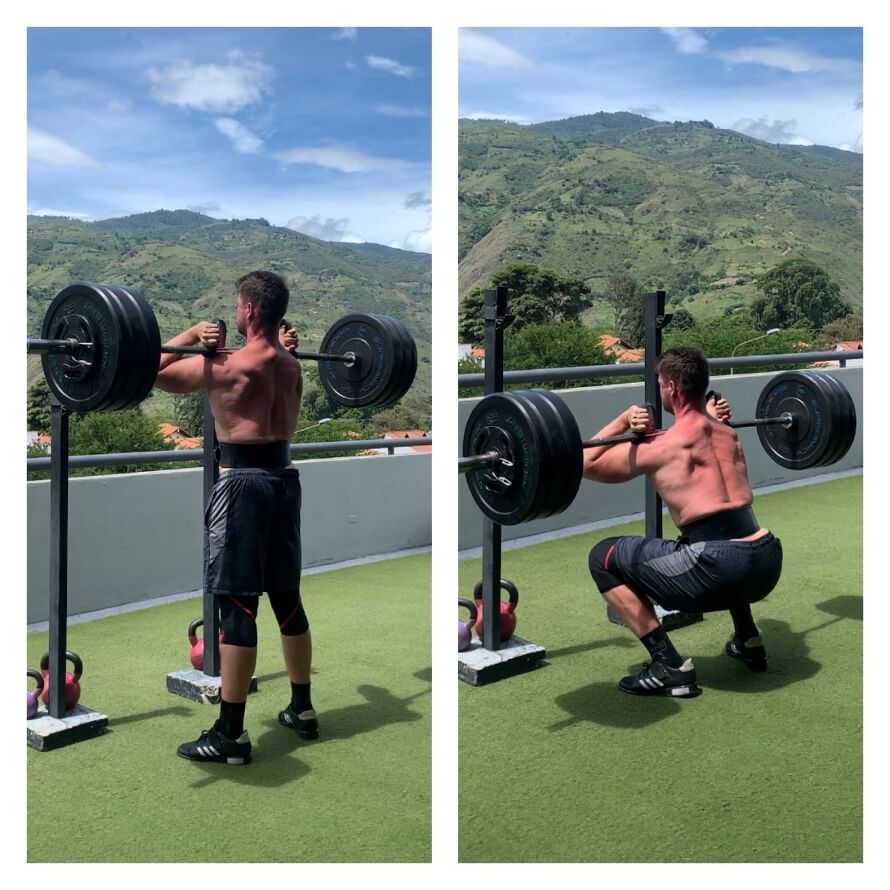
While using lifting straps for front squats is stable and comfortable, it’s still not as effective as the front rack. For that reason, I recommend using this grip as a stepping stone to improve mobility.
It works well for this because it allows you gradually inch your hands closer to the bar, making it easier to work toward a proper front rack position over time. Once your flexibility improves, you should transition to the front rack position.
How to Front Squat with Staps:
- Set the barbell in the squat rack at about collarbone height.
- Wrap lifting straps around the barbell slightly narrower than shoulder-width apart, feeding the loose ends through the loops.
- Step closer to the bar so it presses against the front of your shoulders.
- Grab the loose ends of the straps in each hand and push your elbows up and out in front of the bar.
Expert Tips:
- Grip the straps but don’t wrap them around your hands. Wrapping them can make dropping the bar harder, which can cause problems if you fail a rep or lose balance and have to dump the bar.
- Move your grip an inch or so closer to the barbell every few weeks of training. Over time, this will help you gain the flexibility required to hold the front rack position.
- If you have very large biceps, you may never be able to hold the front rack position. In that case, performing the front squat with straps is an effective workaround.
FAQ #1: What’s the correct front squat hand position?
It depends. The front rack grip is typically the best hand position for front squats because it offers the most stability.
However, if you lack the wrist or shoulder mobility to hold the bar properly in the front rack position, front squatting with straps or using the crossed-arm grip are good alternatives. These grips are gentler on your joints but aren’t as secure, especially as the weights get heavier.
FAQ #2: What grip should you use if the front squat causes wrist pain?
If front squatting using the front rack causes wrist pain, try using the crossed-arm grip or lifting straps. The crossed-arm grip reduces the strain on your wrists by allowing you to perform the exercise with your hands resting on top of the bar.
Performing the front squat with straps is another workable solution since it allows you to mimic the front rack position without requiring you to wedge your hands under the bar.
FAQ #3: What’s the best front squat grip width?
As a general rule, your hands should be about shoulder-width apart or slightly wider when using the front squat rack position. That said, your individual body mechanics may change this, so play around with grip width until you find a position that’s comfortable and allows you to perform the exercise comfortably and without your elbows dropping.
